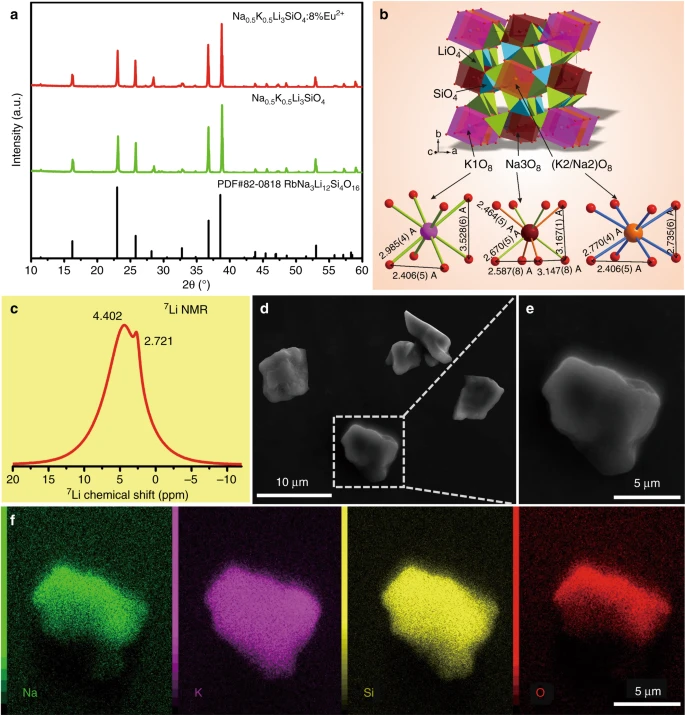J. Am. Ceram. Soc., 2019, 102(8), 4648-4658. https://ceramics.onlinelibrary.wiley.com/doi/abs/10.1111/jace.16337
Nitride phosphors of Ca0.99−xSrxAl1.01Si0.99N3:0.01Ce3+ (0 ≤ x ≤ 0.9) were synthesized by conventional solid-state method. XRD data analysis shows that all samples are single phase with CaAlSiN3-type structure. Under blue or near-ultraviolet (~400 nm) light excitation, the emission peak can be tuned largely from 615 to 568 nm by increasing Sr content, and the emission intensity is maximal at x = 0.8. With the Sr content increase, the emission band blue-shifts due to the decreased crystal field splitting and the reduced centroid shift; while the thermal luminescence quenching resistance is almost unchanged. The quenching temperature (T50) is well above 500 K for all samples, which satisfies the requirement of commercial application. The quenching process is mainly attributed to the radiationless transitions by thermally activated crossover from the 5d excited state to 4f ground state in the configurational coordinate diagram. The luminescence properties show that the (Ca,Sr)AlSiN3:Ce3+ phosphors are very promising for use in blue and near-ultraviolet light excited white-light-emitting diodes.







